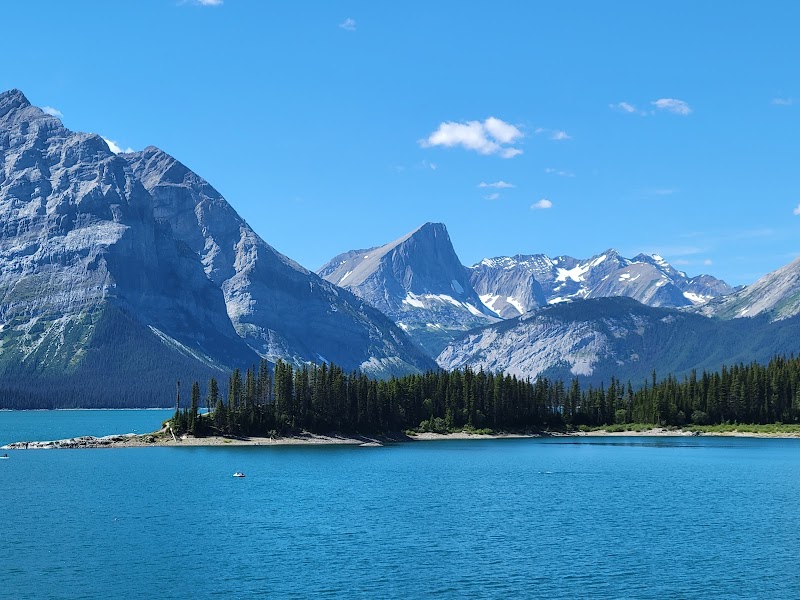
Kaslo River Trail Marathon: Navigating Adventure on British Columbia’s Wild Pathways
The Kaslo River Trail Marathon in British Columbia offers a demanding, immersive experience along a dynamic river valley. This 42-kilometer route blends steady elevation, rich forested terrain, and sweeping water views—ideal for hikers and runners ready to engage with nature on its own terms.
Hydrate Strategically
Water sources exist but are spread out; carry enough or bring a filter to avoid dehydration along the 42 km route.
Wear Supportive Footwear
Choose sturdy trail shoes with ankle support and good traction to handle roots, rocky patches, and variable terrain.
Layer Clothing
Mornings can be chilly and damp; use breathable layers to adjust as temperatures rise during the day.
Start Early
Begin your run or hike early to maximize daylight and avoid afternoon weather shifts and fog.
Kaslo River Trail Marathon: Navigating Adventure on British Columbia’s Wild Pathways
The Kaslo River Trail Marathon carves a challenging yet rewarding route along the rugged waterways and forested slopes of Kaslo, British Columbia. Stretching over 42 kilometers, this marathon stretches the limits of endurance and observational skill, threading through dense cedar and fir groves that lean over winding rivers daring you forward with their restless currents. Elevation gain totals roughly 900 meters, presenting a steady challenge rather than sudden spikes — a measured climb that invites steady pacing and attentive footing.
Trail surfaces vary from packed dirt to roots and occasional rocky patches, demanding durable footwear with good grip and ankle support. The path moves between shaded stretches under towering canopies and open outlooks where the valley unfurls below with a crisp, cool breeze that shifts the scent of pine and wet earth. Along the way, the air carries the sharp murmur of flowing water, as the Kaslo River plays a constant, shifting companion.
Timing your marathon for late spring through early fall offers the most stable weather, with clearer skies and longer daylight hours. Expect soft patches of moss lining steps and trail edges, fertile grounds for vibrant ferns and wildflowers that color the understory come summer. Early mornings bring a sheen of dew and cooler temps, urging a layered approach to clothing: breathable but adaptable.
Hydration is crucial—water sources appear at intervals but should not be solely relied on without treatment options. Plan your fuel breaks around the steady rhythm of the trail; energy gels, nuts, and light snacks work best without heavy packing. The trail’s moderate technical demands reward steady focus, making it accessible to fit, experienced hikers and runners familiar with long-distance navigation.
Trail markers are clear, but the forest’s moods shift quickly — fog can roll in unexpectedly, drawing the river’s whispers into a somber murmur. For first-timers, or those less familiar with marathon distances, pairing with local guides or running partners enhances safety and enjoyment. Kaslo itself is a short drive away, offering warm meals and quiet rest to refuel before or after the challenge.
Respect for the land here means leaving no trace, staying on the path, and watching for sensitive habitats especially around river banks where blue heron and otter families make their homes. The trail is fiercely itself: an invitation to meet the raw pulse of BC’s wild heart with every measured step.
Nearby Trips
All Adventures
Boat Charters
Water Activities
Adventures near Kaslo, British Columbia
Discover the unique and memorable adventures that make Kaslo, British Columbia special.
Frequently Asked Questions
Is the Kaslo River Trail Marathon suitable for beginners?
While the trail is well-marked, its length and elevation gain make it best suited for hikers or runners with moderate to advanced endurance levels. Beginners can attempt shorter sections or train with shorter runs before tackling the full marathon.
Are there any water crossings on the trail?
Yes, the trail runs alongside the Kaslo River with some shallow crossings and bridges. Most are stable but be cautious during spring runoff or after heavy rain when currents strengthen.
What wildlife might I encounter?
Expect to see river otters and often great blue herons near waterways. Black bears and deer inhabit the region, so maintain distance and follow local wildlife safety practices.
Can I camp along the trail during the marathon?
Camping is allowed only in designated areas near the trailhead or in nearby provincial parks. The marathon itself is typically completed in a day but planning overnight stops requires advance permission.
How accessible is Kaslo for accommodations?
Kaslo offers a range of accommodations—lodges, B&Bs, and campgrounds—just a short drive from the trailhead, making it an ideal base for early starts and post-marathon recovery.
Are guide services available for the Kaslo River Trail Marathon?
Local outfitters provide guided runs and hikes especially in peak seasons, which can help with navigation, safety, and local insights for first-time marathon participants.
Recommended Gear
Trail Running Shoes with Ankle Support
Protects feet on uneven terrain and offers traction on wet or root-covered sections.
Hydration Pack or Water Bottles with Filter
Ensures you can refill safely from natural water sources along the trail.
Lightweight Breathable Layers
Keeps you comfortable with temperature changes throughout the day.
GPS Device or Map and Compass
Crucial for trail navigation and avoiding disorientation in changing weather or low visibility.
Local Insights
Hidden Gems
- "Panoramic lookout 10 km in, offering a sweeping view of the Kaslo valley below."
- "Quiet river bends favored by otters and kingfishers."
- "Small waterfalls tucked beyond the halfway point, less visited but refreshing for breaks."
Wildlife
- "Black bears forage at dawn and dusk—carry bear spray and keep noise."
- "Great blue herons fishing along river edges."
- "Occasional sightings of river otters playing near calm pools."
History
"Kaslo has a rich mining and logging history from the late 19th century, with remnants of old rail lines and forestry camps visible near the trail margins. The area holds Indigenous significance, with local Sylix people historically connected to the river and forest."
